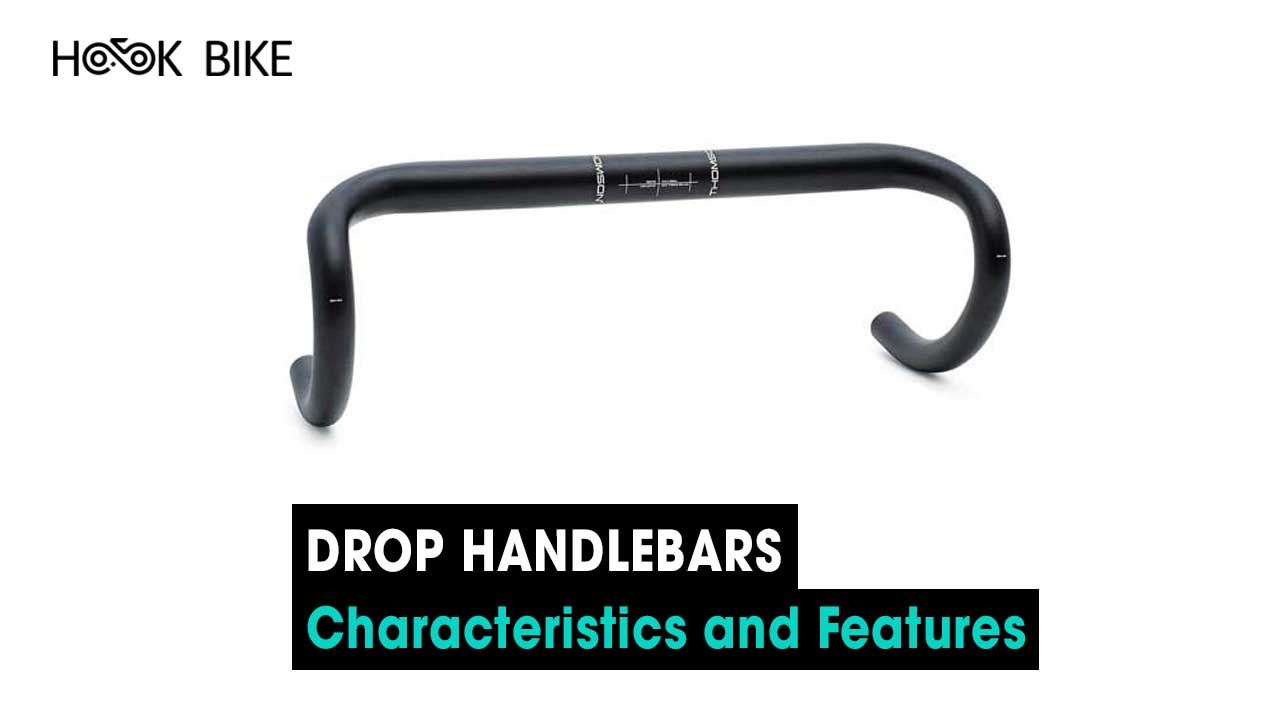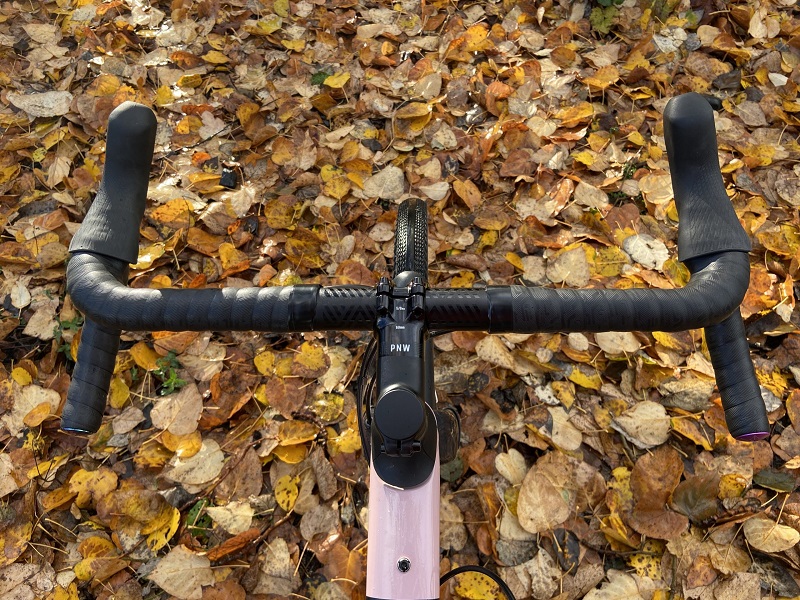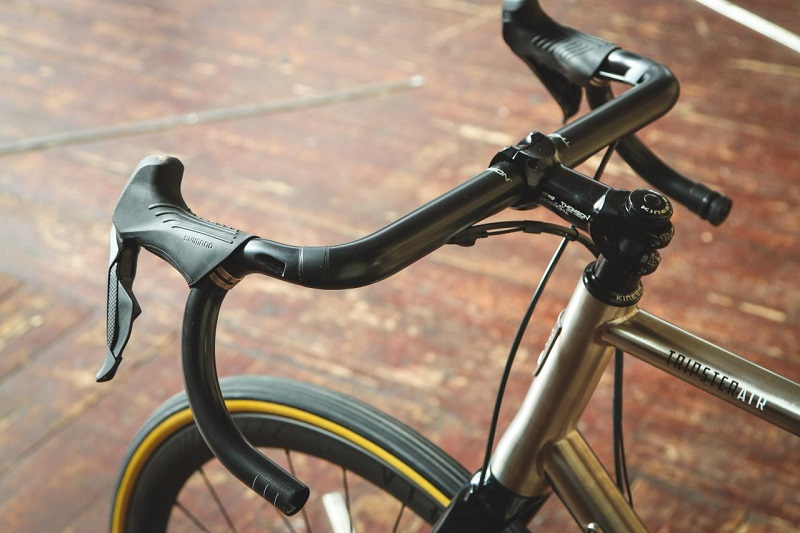Parts
Drop Handlebars: Characteristics and Features
When it comes to choosing the right handlebars for a bicycle, the choice can dramatically affect the riding experience. Among the many types available, drop handlebars have gained significant popularity, especially among road cyclists and racers. Their unique design not only contributes to the aesthetics of a bicycle but also provides riders with various benefits. In this article, HookBike will delve into the key characteristics and features of Drop handlebars and explore why they are a top choice for many cyclists.
History of Drop Handlebars
Drop handlebars, often seen on road racing bicycles, have been an iconic component of bicycle design for well over a century. Their distinctive shape, characterized by the downward curve or “drop” that allows for multiple hand positions, has undergone various modifications and iterations over the years, but the core concept has remained fairly consistent. Let’s delve into a brief history of drop handlebars:
Early Days (Late 19th to Early 20th Century): The origins of drop handlebars can be traced back to the late 19th and early 20th centuries. As cycling races grew in popularity, there was a need for more aerodynamic positions to improve speed. The dropped handlebar design allowed riders to lean forward and reduce wind resistance.

Tour de France and Popularity: Since its inception in 1903, the Tour de France, one of the most prestigious cycling races in the world, showcased the utility of drop handlebars. Their prevalence in such high-profile races solidified their importance in the competitive cycling world.
Mid-20th Century Modifications: As technology and materials improved, there were subtle changes to the design and ergonomics of the handlebars. Aluminum started replacing steel, making the bars lighter. The shape was also slightly modified for better hand grip and comfort.
1980s to 2000s – Aerodynamic Additions: With advancements in aerodynamic studies, additional components like aero bars, which are extended bars allowing riders to lean forward into a tuck position, were introduced and often integrated with drop handlebars, especially in time-trial scenarios.
Ergonomic Refinements: As more research was done on rider comfort and efficiency, there were further refinements in handlebar design. The shape, width, and depth of the drop, as well as the angle and shape of the brake hoods, became subjects of study and improvement. Brands began to offer variations to cater to individual rider preferences.
21st Century – Material Advancements: With the advent of carbon fiber technology, drop handlebars became even lighter and stiffer. This material also allowed for more intricate designs and customizations tailored to a rider’s specific needs.
Integration of Technology: Modern drop handlebars often come integrated with routing systems for brake and gear cables (or even electronic shifting wires) to keep them hidden and improve aerodynamics. Some handlebars now also integrate mounts for cycling computers, lights, and cameras.
Customization and Personalization: As with many components in modern cycling, drop handlebars are now available in a myriad of shapes, sizes, and materials to cater to specific needs. From those designed for pure racers to endurance riders, the selection is vast.
See more: types of handlebars for bicycles

Drop handlebars have evolved considerably since their inception. What began as a simple design to reduce wind resistance has now transformed into a sophisticated component, balancing aerodynamics, ergonomics, and technology to suit the needs of modern cyclists.
Key Characteristics of Drop Handlebars
Drop handlebars are distinctive in design and function, offering riders multiple grip positions for comfort, aerodynamics, and control. Here are the key characteristics of drop handlebars:
Shape
The most defining feature of drop handlebars is their “drop” shape. This curved, downward bend allows for multiple hand positions, including on the tops, hoods, and drops.
Multiple Hand Positions
- Tops: The flat section closest to the rider, often where casual or relaxed riding is done, especially during climbs or when there’s no immediate need for brake access.
- Hoods: The part where the brake levers are mounted. This position offers a semi-aerodynamic posture while still providing easy access to brakes and gear shifters.
- Drops: The lower curved sections of the bars. This position is used for aggressive or aerodynamic riding, especially during descents or sprints.

Width
The width of drop handlebars typically corresponds to the rider’s shoulder width. This alignment ensures optimal comfort and control. Handlebars that are too wide can affect steering and aerodynamics, while those that are too narrow can cause discomfort.
Drop
This is the vertical distance from the top of the bar to the lowest point of the bend. Bars with a larger drop will have a more pronounced curve, while those with a smaller drop are shallower.
Reach
This is the horizontal distance from the center of the handlebar to the furthest point of the bend. Bars with longer reach extend further outwards.
Material
Drop handlebars can be made from a variety of materials, including:
- Aluminum: Commonly used due to its good balance of weight, strength, and cost.
- Carbon Fiber: Lighter and can dampen vibrations, but generally more expensive.
- Steel: Heavier but offers durability and a classic feel. Less common in modern racing bikes.
- Titanium: Strong, lightweight, and resistant to corrosion, but expensive.
- Cable Routing: Modern drop handlebars often have grooves or channels on the underside or internally to route brake and gear cables, creating a cleaner look and improving aerodynamics.
Compatibility with Aero Bars
Some drop handlebars are designed to be compatible with clip-on aero bars, which are extensions that allow the rider to adopt an even more aerodynamic position.
Flare
Some drop bars, especially those designed for gravel or adventure riding, have a flare where the drops splay outwards, providing more control and wrist clearance.
See more: Butterfly Handlebars
Ergonomic Design
Modern designs may incorporate ergonomic features such as flattened sections on the tops or specific bends in the drops for increased hand comfort.
Understanding these characteristics can help a rider choose the perfect drop handlebar tailored to their riding style, comfort preferences, and the type of cycling they engage in.

Benefits of Using Drop Handlebars
Drop handlebars offer several advantages to cyclists, particularly those engaged in road cycling, racing, or long-distance rides. Here are the primary benefits of using drop handlebars:
- Multiple Hand Positions: Drop handlebars provide at least three main grip positions (tops, hoods, and drops), allowing riders to change their grip during long rides, reducing hand and arm fatigue.
- Aerodynamics: One of the primary benefits of the drop position is improved aerodynamics. By lowering the torso and reducing the frontal area, riders can decrease wind resistance, which can be especially beneficial during sprints, descents, or battling headwinds.
- Versatility: The variety of hand positions not only caters to aerodynamics but also to climbing (using the tops for an upright position) and technical control during descents (using the drops).
- Increased Control: Holding onto the drops lowers the rider’s center of gravity and offers a wider grip stance, which can enhance stability and control, especially at high speeds or during aggressive maneuvers.
- Leverage during Sprints: The drops provide a wider grip, which can give riders better leverage when out of the saddle and sprinting.
- Efficient Power Transfer: The forward-leaning position that the drops encourage can help engage core muscles and optimize hip angles for more effective power transfer during pedaling.
- Reduced Fatigue: The ability to switch hand positions can help distribute the load across different muscle groups and reduce the fatigue of any single group.
- Ergonomic Brake and Gear Shifting: Modern integrated brake and gear levers are designed for easy access when hands are on the hoods, making braking and shifting seamless without the need to move the hands.
- Protection in Crashes: In the unfortunate event of a crash, the protruding bars can sometimes protect the rider’s hands and body from direct impact.
- Customization: Drop bars come in various shapes, widths, and materials, allowing riders to find a fit that suits their anatomy, riding style, and preferences.
- Enhanced Cooling: The forward and lowered position on the drops can expose the rider’s back to more airflow, potentially aiding in cooling during intense efforts.
While drop handlebars offer many benefits, they may not be the best choice for every type of cycling or every rider. For instance, many urban commuters, mountain bikers, or those prioritizing a relaxed, upright posture might opt for other handlebar types. It’s essential to choose handlebars based on individual needs, the kind of riding you’re doing, and personal comfort preferences.

Are Drop Handlebars expensive? How much?
The cost of drop handlebars can vary widely based on several factors, including the material they’re made from, the brand, the specific features they offer, and their intended use (e.g., professional racing vs. casual riding). Here’s a general price range:
Aluminum Handlebars
- Entry-level: $20 – $50
- Mid-range: $50 – $150
- High-end: $150 – $250
Aluminum bars are commonly used because they offer a good balance between weight, durability, and cost. They are suitable for both casual riders and competitive racers.
Carbon Fiber Handlebars
- Mid-range: $100 – $300
- High-end: $300 – $600 or more
Carbon fiber handlebars are favored by many competitive racers and enthusiasts because of their lightweight properties and ability to dampen road vibrations. However, they tend to be more expensive than aluminum bars.
Steel Handlebars
- General range: $30 – $150
Steel bars are less common in modern road bikes due to their weight, but they offer durability and a classic feel. They are typically found on vintage or retro bikes.
Titanium Handlebars
- General range: $200 – $500 or more
Titanium bars are lightweight, strong, and corrosion-resistant but are less common due to their higher cost.
Specialty Handlebars
Handlebars designed for specific purposes, like gravel biking or aero time trials, might have unique features and can vary in price based on those specialized needs.
Brand and Model
High-end cycling brands or models that are particularly popular in the professional cycling circuit can command premium prices.
Integrated Systems
Some modern handlebars come with integrated stem systems or aero features that can raise the price.
See more: Bullhorn Handlebars

When shopping for handlebars, it’s essential to not only consider the price but also the fit, comfort, and how well they cater to your specific cycling needs. Moreover, prices can vary based on the region, retailer, and potential changes in the market, so it’s always a good idea to check current pricing from various sellers or local bike shops.
Conclusion
Drop handlebars have stood the test of time, evolving with the needs of riders and the advancements in cycling technology. Their unique characteristics and features, from the distinctive shape to the multiple hand positions they offer, make them a preferred choice for many. Whether you prioritize speed, versatility, or control in your cycling experience, drop handlebars provide a perfect blend of all these elements, ensuring a ride that’s both efficient and comfortable.

